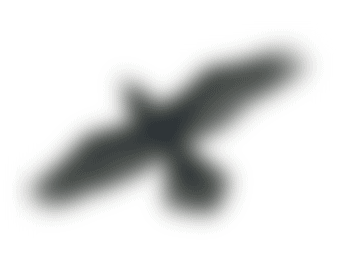The Shadow of the blackbird by DAVID BRUCE
Description

Art can be used to express the joy of living - something I think I've done in my more 'good-humoured' pieces, like Piosenki and Steampunk.
But it can also of course be used to reflect on the deeper mysteries of existence. For me, Wallace Stevens' poem Thirteen Ways of Looking at a Blackbird is one of the most moving meditations on life's mystery; moving partly because it circles around the mystery without trying to explain it - the poem seems to have a gaping hole at its center, which is the very mystery, the 'indecipherable cause' it reflects upon.
I particularly liked the image of the 'shadow of the blackbird' found in the seventh stanza. If the blackbird in the poem is a mysterious, mystical bird, which is sometimes real, sometimes symbol - it might be god, life or death - then how much more mysterious is its shadow.
A common starting point for me in a piece is instrumental colour, and I often draw inspiration from the types of writing found in folk music. As a result, for many years writing for piano has been something of a challenge for me, I think partly because it has little music that could be considered 'roots' in the folk-sense - other than perhaps boogie and blues.
When I started talking with Bruce Levingston about writing a piece for him he sent me a recording he had made of Schumann's Kreisleriana. Although it was a piece I knew well, the sensitivity of Bruce's playing moved me and I was struck by the feeling that this was, in a way 'roots music' for piano. I borrowed the first few notes of the Schumann's masterpiece and started tinkering. The piece developed from there.
The shadow of the blackbird is in two movements, which -like the Schumann - both have something of a fantasia quality to them. The first movement begins with fast-paced gestures that keep converging onto a single fast-repeated note. This is contrasted with a more chordal section. Throughout the rest of the movement the two ideas are gradually more and more interwoven with one another. Throughout the movement there are accelerandi and rallentandi, as if time is being shifted beneath our feet.
The second movement also plays with our perception of time, as a gently rocking melody and accompaniment are constantly shifting tempo back and too, never quite settling into one tempo or another. The movement is much more delicate than the first, becoming more and more fragile, with the melody line fragmenting into multiple overlapping shards at times. After the final most extreme fragmentation, we arrive suddenly, as if through a worm-hole back where we started in the first movement, only now with a deepened sense of mystery.
Press / Latest Reviews
Download or Stream
Details
for Solo Piano
Duration 10 mins
Composed
First performance Bruce Levingston, May 6th 2011, Library of Congress, Washington DC
Commissioned by Premiere Commission

Past Performances
- May 6 2011
Library of Congress, Washington DC (Bruce Levingston) (world premiere)
- May 12 2011
Zankel Hall, Carnegie Hall, NYC (Bruce Levingston)
- Feb 29 2012
Michael Tippett Center, Bath Spa Live (Matthew Schellhorn) (UK Premiere)
- Feb 20 2014 1pm
Music Hall, Guildhall School of Music and Drama, London (Julia Samojło )
COMMENTS
Leave a Reply




